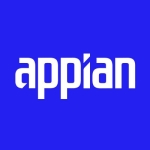What is our primary use case?
In the past, people used Informatica MDM because it was one of the leading tools at that point in time to work on an on-premises model. It was the leading tool in the market, offering vast customization options and matching and merging options that were better compared to other solutions. The way the data lineage or the customization options it gave, the tool was good. Now, the tool has a changed dynamic, and it is currently available on the cloud. Apart from Informatica MDM, there are other tools, as well as the market, that are completely on the cloud.
What is most valuable?
The feature of the product that has been most helpful in improving data quality revolves around Informatica DQ or IDQ, which is one of the tools Informatica offers. IDQ helps cater to the scoring of the data, clean up the data, and integrate it.
What needs improvement?
In terms of the room for improvement required in the product, I would say that the product is still in the maturing phase, specifically on the cloud. The product is not too user-friendly to do the configurations. There are a couple of areas in the product where I feel improvements can be made, but if I consider the algorithms used in the match process, the tool is very robust.
For how long have I used the solution?
I have been using Informatica MDM for nine to ten years. My company is a partner of Informatica, and we also implement the tool.
What do I think about the stability of the solution?
Stability-wise, I rate the solution a seven out of ten.
What do I think about the scalability of the solution?
In terms of scalability, I would say that the product is currently more available in the cloud. Scalability-wise, I rate the solution a five out of ten. The scalability on the cloud is good. On the cloud, by default, the tool becomes quite scalable.
Informatica provides premium products. The product is mainly meant for enterprise-level customers because the tool is available at the premium cost.
How are customer service and support?
I have not used the technical support provided by the product. If you asked me about the support offered for the tool's on-premises model, I would say they were really good. We really liked Informatica's support. With the cloud, I'm not aware of the support.
How was the initial setup?
If one is a difficult setup and ten is easy, I rate the product's initial setup phase as a five.
If you are talking about the product on the cloud, the initial configuration must be done. There is quite a lot of refresh which takes place every time we have to publish something, and then we have to wait for some time. It is not that you make a change, but you can see it immediately in the tool. The wait period is quite long. If you are a first timer, it takes time for that person to figure out the product. Once you get the hang of it, then it becomes easy.
An end-to-end implementation would take nine to ten months, or maybe a little more than that, depending upon the customer's desired features.
What was our ROI?
The tool does give a good ROI.
What's my experience with pricing, setup cost, and licensing?
The product is not very pocket-friendly for small and medium-sized businesses, and it is understandable because of the kind of features the tool gives.
On a scale of one to ten, if one is a cheap solution and ten is an expensive one, I rate the tool's price as seven.
What other advice do I have?
Informatica MDM is able to handle complex data integration scenarios with the help of IDCM, which offers the power of an ETL tool.
Speaking about the AI part, I feel the product is still in the maturing phase.
My first preference would be for Welkio, and only after that would I prefer Informatica MDM, so I would say that it won't be my first choice.
I rate the tool a seven out of ten.
Disclosure: My company has a business relationship with this vendor other than being a customer. Partner


















